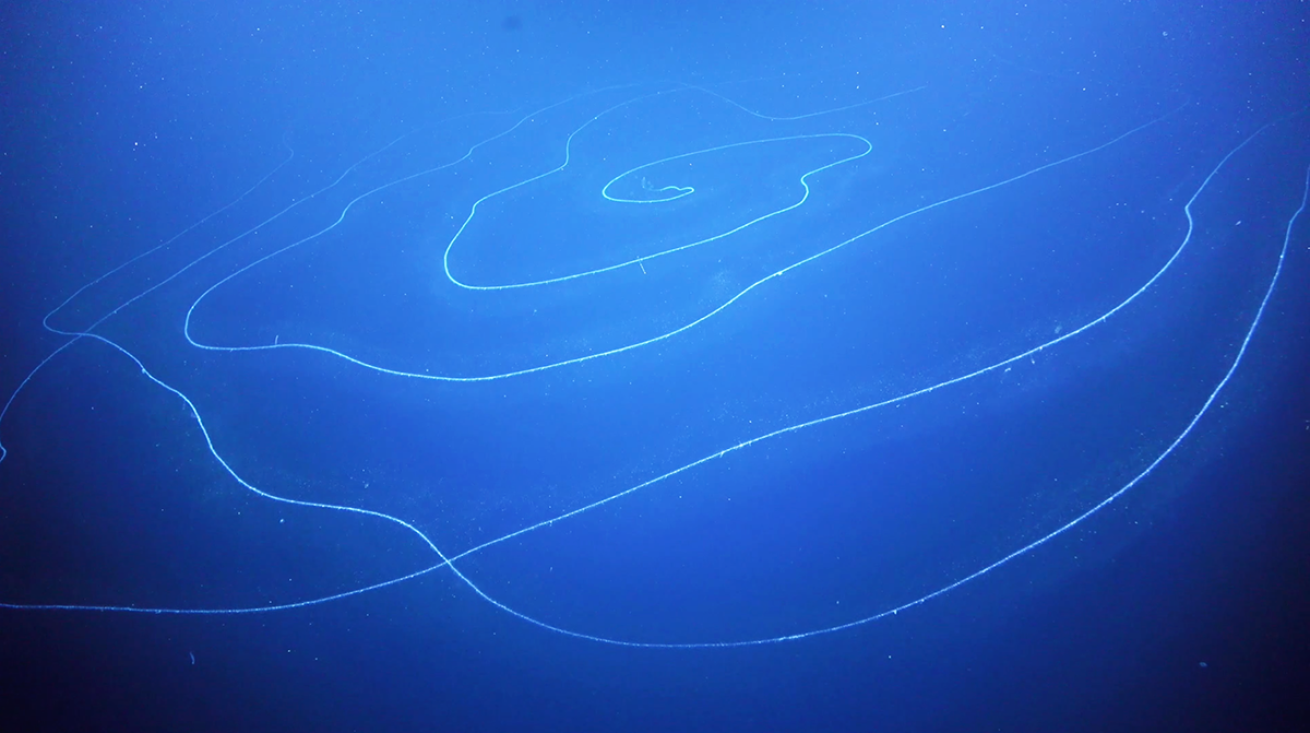What It’s Like to Make a Big Ocean Discovery

Schmidt Ocean InstituteEstimated to be 390 feet long, this siphonophore is likely the longest animal in recorded history.
It had been a long shift in the control room spent searching — to no avail — for minuscule organisms attached to the surface of Western Australia’s undersea rocks. On days like this, the most exciting part about being a remotely operated vehicle pilot for the Schmidt Ocean Institute isn’t the science itself; it’s the chance to see what’s hanging out in the water column as we bring our ROV, SuBastian, back to the surface.
The control room has cleared out for the day, and it’s just me and one junior scientist recovering SuBastian. As we fly to the surface, the camera monitor resembles something out of Star Wars, like we’re zooming through the galaxy at the speed of light, white particles blasting past our field of vision. Every once in a while, I spot a speck that doesn’t move quite like the rest, a cue that there’s something nearby that’s particularly large and potentially interesting, like a squid or pelagic fish, and I stop to check it out.
But as we’re ascending on this day, something comes into the frame that doesn’t look like the typical anomaly. Whatever it is, I can tell it’s massive by the fact that it’s right in front of me and yet still out of focus. As I back the ROV up to take it into view, I realize two things: First, the creature I’ve found is a siphonophore, and second, it’s unlike any siphonophore I’ve seen before.
SuBastian’s live video feed is broadcast in the library and mess room of our ship, the R/V Falkor, and it’s only a matter of minutes before those who are watching flood into the control room to see the colossal, gelatinous organism.
Siphonophores are like undersea spiderwebs. The animal clones its cells thousands of times, threading them together to create a string-like colony that entraps prey like small fish and krill. They’re also as fragile as spiderwebs, so I know if I get too close to this one, it’ll disintegrate.
Carefully, my co-pilot and I fire up SuBastian’s navigation system and begin encircling the spiraled siphonophore. We can’t determine its exact length in the moment, but we can at least get an estimation by taking its circumference. We measure 154 feet, and that’s just the outermost ring.
I’m awestruck. If everything checks out, I’ll have just found the longest animal recorded in history — and on accident, by just poking around in the midwater after a routine day of surveys. It reminds me why do what I do. The ocean is full of mystery and wonder beyond my imagination.
Researchers will soon estimate that, from one end to the other, the siphonophore is about 390 feet long, and it’ll be months before we get an accurate length based on a laser measurement we collect. But as I sit in the control room today, I just feel grateful to be part of a team that’s making landmark discoveries in our vast, unexplored oceans.










